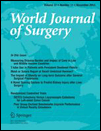Hepatic Artery Reconstruction in Living Donor Liver Transplantation: Risk Factor Analysis of Complication and a Role of MDCT Scan for Detecting Anastomotic Stricture
Abstract
Background
In partial liver transplantation, reconstruction of the hepatic artery is technically highly demanding and the incidence of arterial complications is high. We attempted to identify the risk factors for anastomotic complications after hepatic artery reconstruction and examined the role of multidetector-row computed tomography (MDCT) in the evaluation of the reconstructed hepatic artery in liver transplant recipients.
Methods
A total of 109 adult-to-adult living donor liver transplantations (LDLT) were performed at our institute between 1999 and July 2011. Hepatic artery reconstruction was performed under a surgical microscope (MS group, n = 84), until we began to adopt surgical loupes (4.5×) for arterial reconstructions in all cases after January 2009 (SL group, n = 25). A dynamic MDCT study was prospectively carried out on postoperative days 7, 14, and 28, and at postoperative month 3, 6, and 12 after April 2005 (n = 60).
Results
There were no cases of hepatic artery thrombosis and six cases (5.5 %) of interventional radiology-confirmed hepatic artery stenosis (HAS). Risk factor analysis for HAS showed that ABO-incompatible LDLT was associated with HAS. Use of surgical loupes provided superior results as compared to anastomosis under a surgical microscope, and it also provided the advantage of reduced operative time. The MDCT procedure was useful for detecting HAS; however, the false positive rate was relatively high until 3 months after the LDLT (100 % sensitivity and 72.8 % specificity at 3 months).
Conclusions
Hepatic arterial anastomosis using surgical loupes tended to be time-saving and to yield similar or better results than traditional microscope-anastomosis. The use of MDCT aided the diagnosis of HAS, although the substantial false positive rate should be borne in mind in clinical practice.
Conflict of interest
None declared




